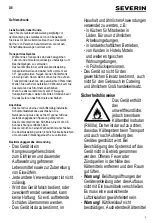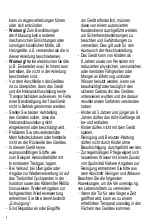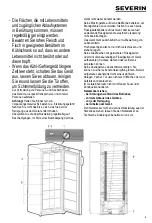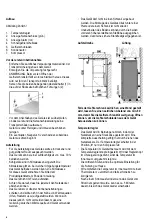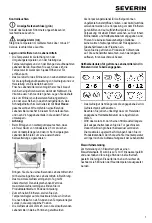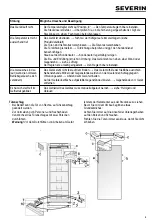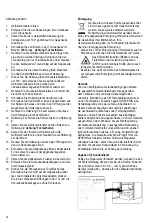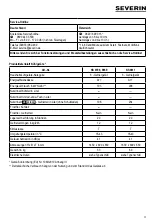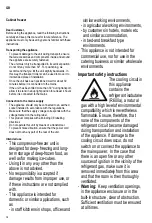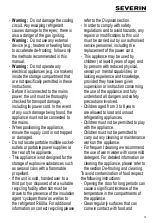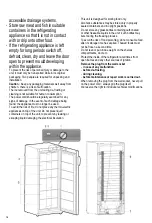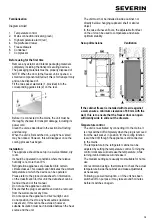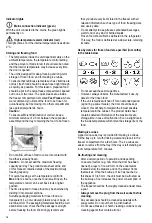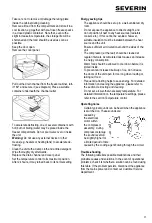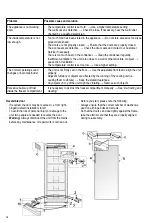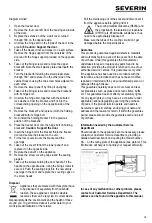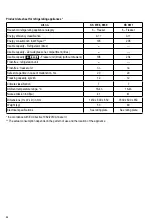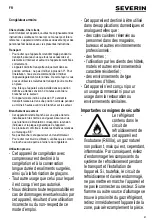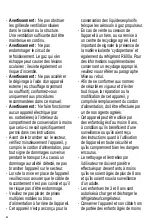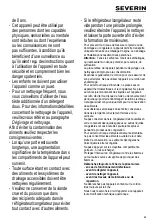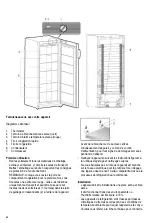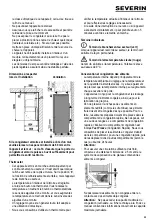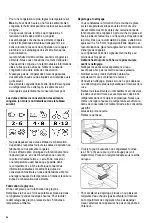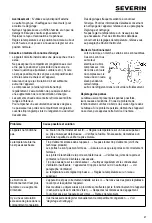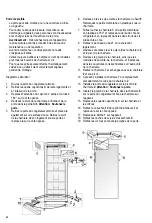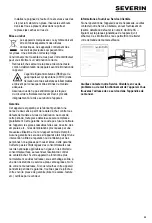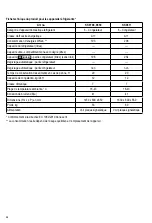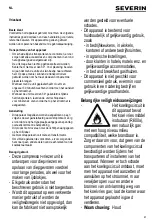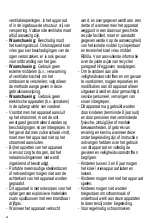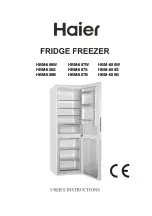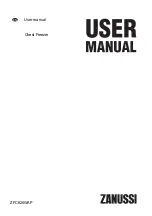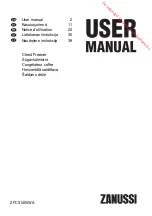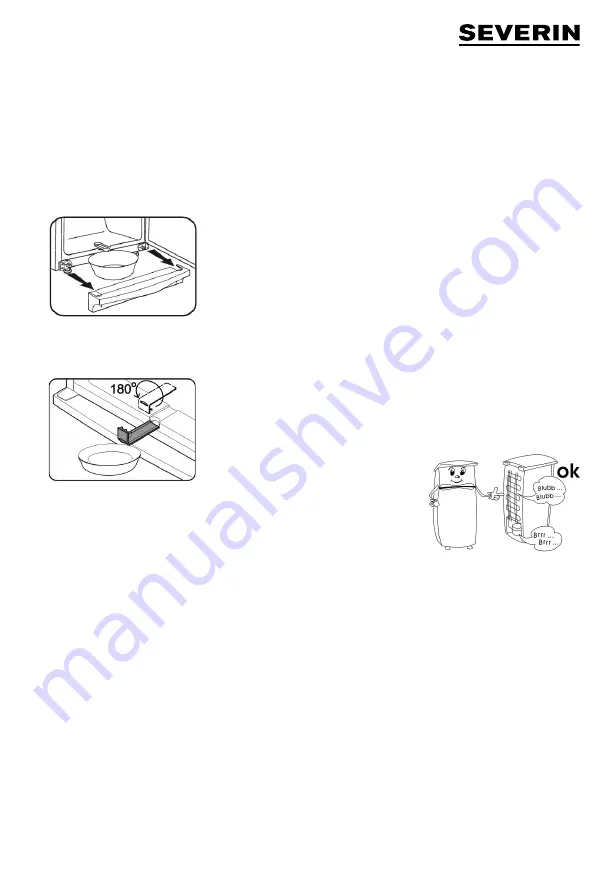
17
∙
Take care not to remove or damage the rating plate
inside the cabinet during cleaning.
∙
Remove all food from the compartment and store it in a
cool location, eg together with pre-frozen freezer-packs
in a closed plastic container. Note that, even with a
slight increase in temperature, the storage life will be
shortened and the food should be used as soon as
possible.
∙
Keep the door open.
∙
Remove the cover panel.
∙
Pull out the drain channel from the freezer cabinet, turn
it 180° and secure it (see diagram). Place a suitable
container underneath the channel outlet.
∙
To accelerate defrosting, one or several containers with
hot (but not boiling) water may be placed inside the
freezer compartment. Do not pour water over or inside
the unit.
∙
Warning:
Do not use any external device or other
means (e.g. heaters or heating fans) to accelerate de-
frosting.
∙
Clean the unit with a damp cloth and a little detergent.
Wipe thoroughly dry afterwards.
∙
Replace the drain channel and cover panel.
∙
Set the temperature control to its maximum position.
After 24 hours, it may turned back to its normal setting.
Energy saving tips
∙
The appliance should be set up in a well-ventilated, dry
room.
∙
Do not expose the appliance to direct sunlight, and
do not position it next to any heat sources (radiators,
cookers etc.). If this cannot be avoided, however,
suitable insulation must be installed between the heat
source and the unit.
∙
Ensure suf
fi
cient air circulation around the sides of the
unit.
∙
The compressor (at the rear) should be cleaned at
regular intervals. Accumulated dust causes an increase
in energy consumption.
∙
Warm food should be allowed to cool down before it is
stored inside.
∙
To prevent an increased build-up of ice, do not leave
the doors of the unit open for too long when loading or
taking out food.
∙
Frequent de-frosting helps to save energy. For detailed
information on cleaning the appliance, please refer to
the section
De-frosting and cleaning
.
∙
Do not set a lower-than-necessary temperature. For
detailed information on the temperature settings, please
refer to the section
Temperature control
.
Operating noise
∙
Certain typical sounds can be heard when the appliance
is switched on. These sounds are:
∙
caused by
the electrical
motor within
the compressor
assembly; during
compressor start-up
the sound level will
be slightly higher for
a limited period of time.
∙
caused by the cooling agent
fl
owing through the circuit.
Trouble-shooting
The following table lists possible malfunctions and their
probable causes and solutions. In the event of operational
p roblems, check
fi
rst whether a solution can be found using
this table. If the problem persists, disconnect the appliance
from the mains power and contact our Customer Service
Department.

